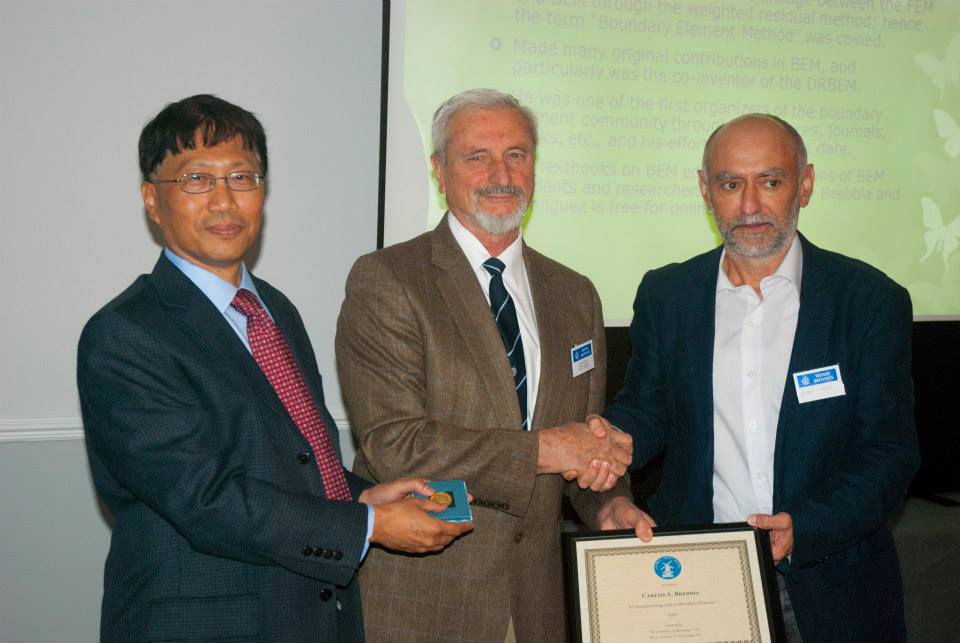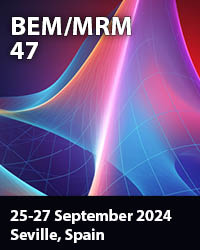 |
This is a new initiative by the University of Mississippi, in association with the Wessex Institute of Technology.
The importance of Green’s work was described by Alex, particularly his development of his functions which set the basis for boundary elements. Very little is known about George Green, there is not even a picture of him. Green was totally self-taught and published a few copies of his most famous works on a subscription only basis.
It is impossible to understand how George Green was able to acquire his knowledge in a backwater place of England, as Nottingham was at that time. He only had access to a local library and distributed his work around sponsors who were unable to fully appreciate the importance of his work.
One of these sponsors pointed out the work to a Cambridge don and this led to a minor appointment at that University, which he had to leave due to illness. Shortly after that he died, his research was forgotten and it was only due to Lord Kelvin that much later on Green’s work was rediscovered. The Green Medal was established to honour him and as a reward to outstanding research carried out in BEM.
The Green Medal Award Committee decided to give the Medal to Professor Carlos A Brebbia, as originator of the technique. He not only proposed the interpretation of the method in variational terms and weighted residuals, but developed its finite element type methodology. Carlos also organised the first boundary element conference in 1978 and promoted the application of the method for the solution of practical engineering problems. The medal was then awarded by Prof Alex Cheng to Prof Carlos A Brebbia, with the congratulations of the Selection Committee. Prof Antonio Tadeu of Coimbra University presented Carlos with a diploma. Carlos thanked them for their kindness and accepted the medal in his own name, as well as the many colleagues who were part of his Southampton group.
He then briefly recalled the beginnings of the boundary element, showing the importance of different scientists and groups in its development. This included the Research School created at Southampton University by the late Prof Hugh Tottenham; the MIT School of Eric Reiner, widely known through the work of Jerry Connor and the discussions with Prof Maurice Jaswon of City University, who was working on indirect boundary integral equations.
The different centres converged towards the Southampton group where the technique originated. The same group also created a series of other research centres around the world, including Japan, Brazil, Spain, Slovenia and others. In particular, it collaborated with the groups in the USA working on the method.
The research work carried out in the 1980’s and 1990’s was most productive and resulted in many, now well established, developments. One of the main objectives of the Southampton group, by then based at the Wessex Institute of Technology, was to create a tool to solve practical engineering problems and methodologies to avoid internal meshes.
As a result, the BEASY code was developed, which is now popular for a range of problems, including problems extending to infinity or those requiring accurate results. This work still continues and has resulted in a very successful performance for BEASY.
A major contribution was the development of techniques such as Dual Reciprocity Method, and one of the main researchers in this field was Prof Paul Partridge in Brazil, who has just passed away. Carlos wanted to take this opportunity to pay tribute to his memory.
Paul was one of the first PhD students in the Southampton Group under Carlos’ supervision. After graduation he found a Post-doctoral position at the Federal University of Rio Grande do Sul in Brazil, a country that he dearly loved. From this Post-doctoral appointment he moved to the University of Brasilia where he became a permanent member of staff, leading to his appointment as a Full Professor. Two years ago he retired from academia and recently passed away after a short illness. Paul will be always remembered for his friendliness, modesty and generosity as well as his many academic accomplishments.




